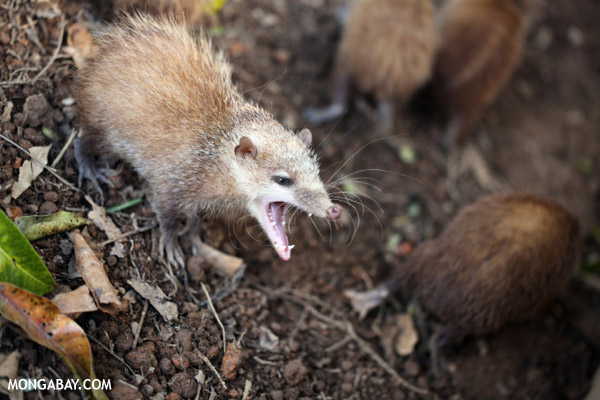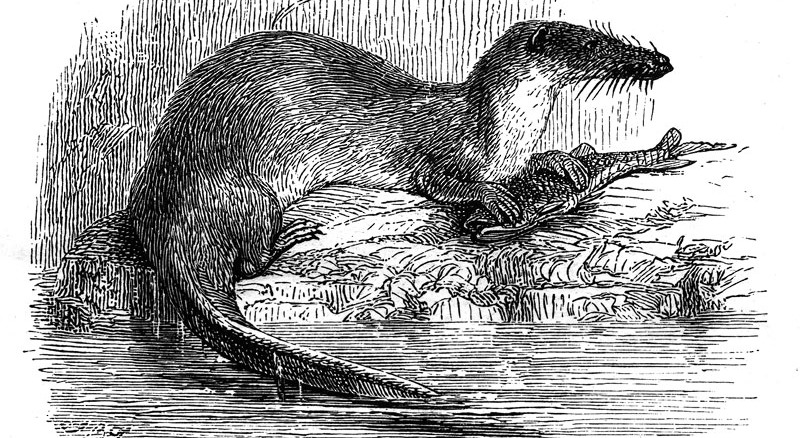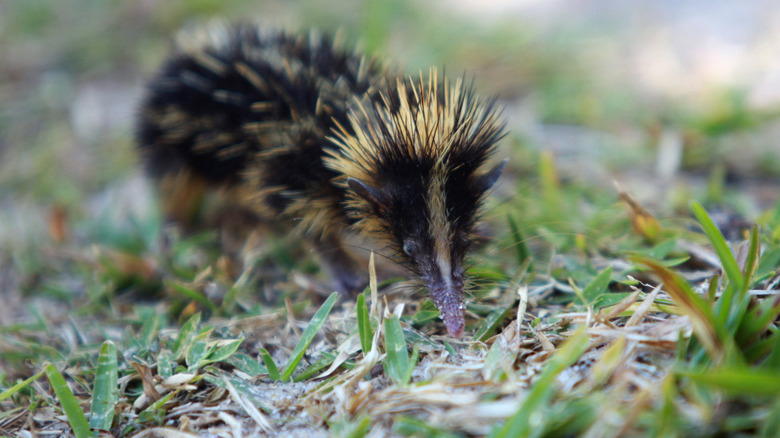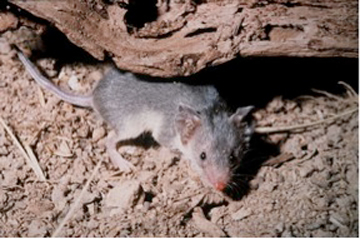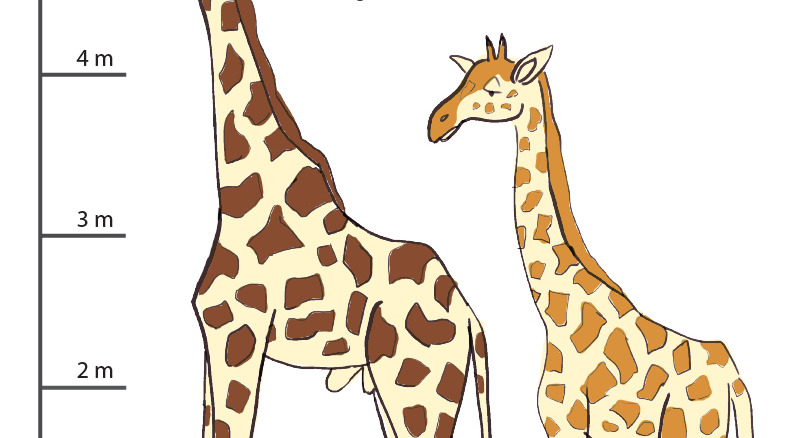Everybody knows that owls fly around at night and build their nests in trees, right?
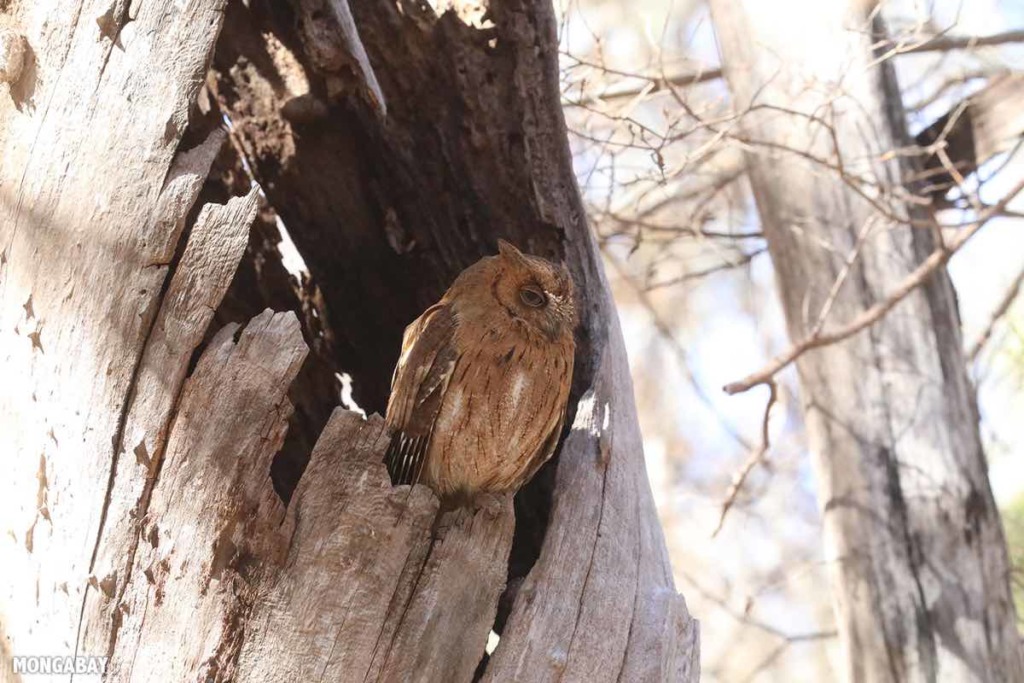
Torotoroka scops-owl (Otus madagascariensis) in Madagascar. Image by Rhett A. Butler.
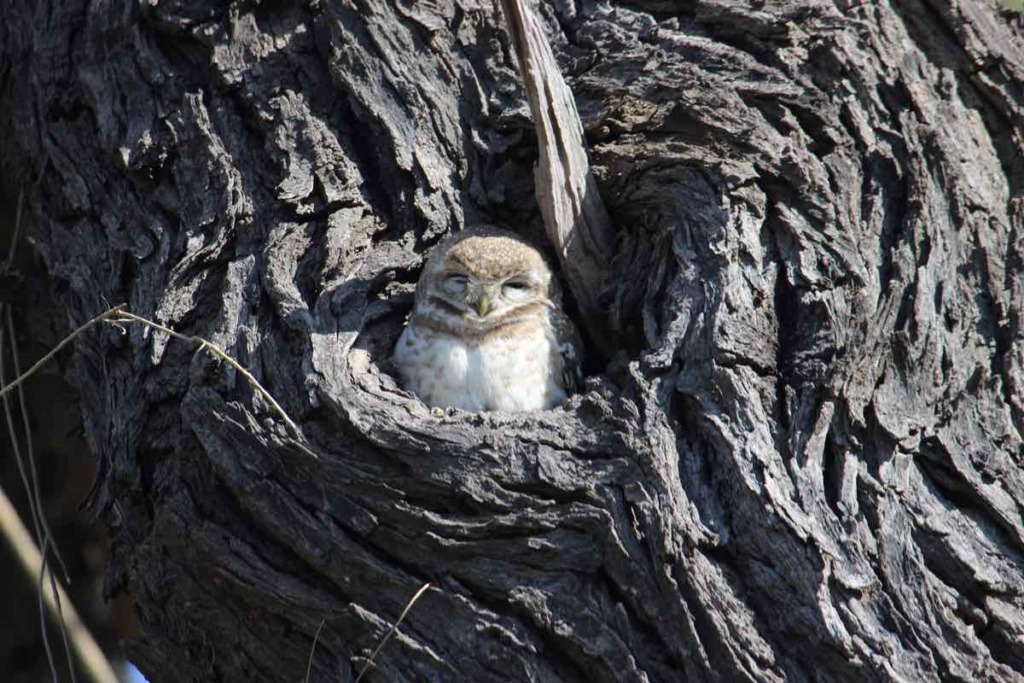
Spotted owlet rests in a tree in India’s Keoladeo National Park. Image by Manon Verchot.
Have you ever heard of an owl that hunts during the day and lives in a hole in the ground?
Meet the BURROWING OWL:
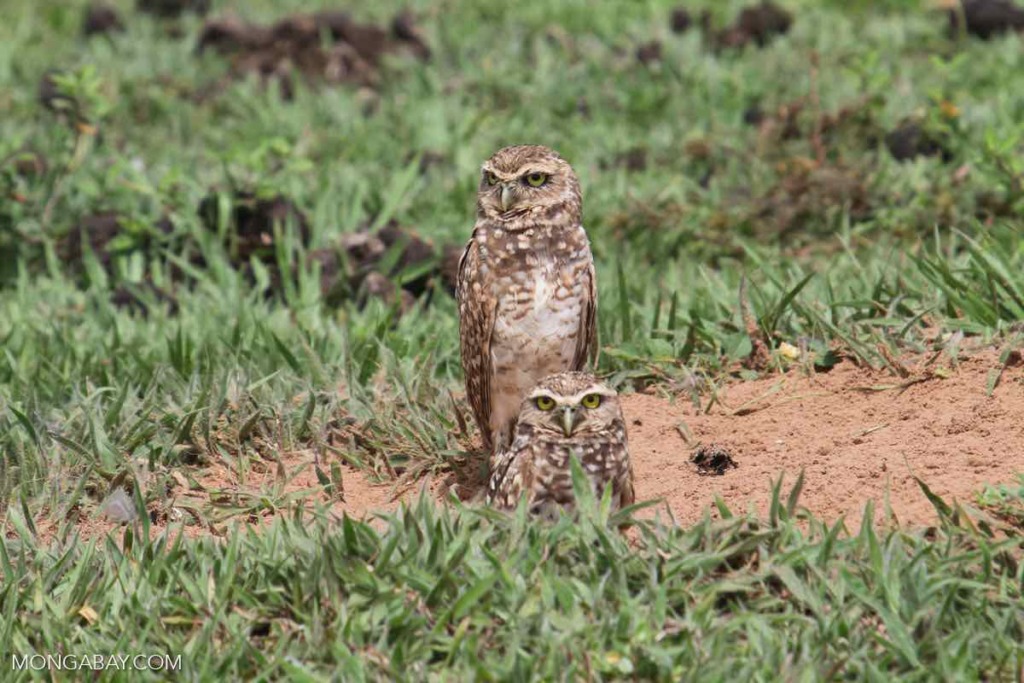
Burrowing owls (Athene cunicularia) in Colombia. Images by Rhett A. Butler.
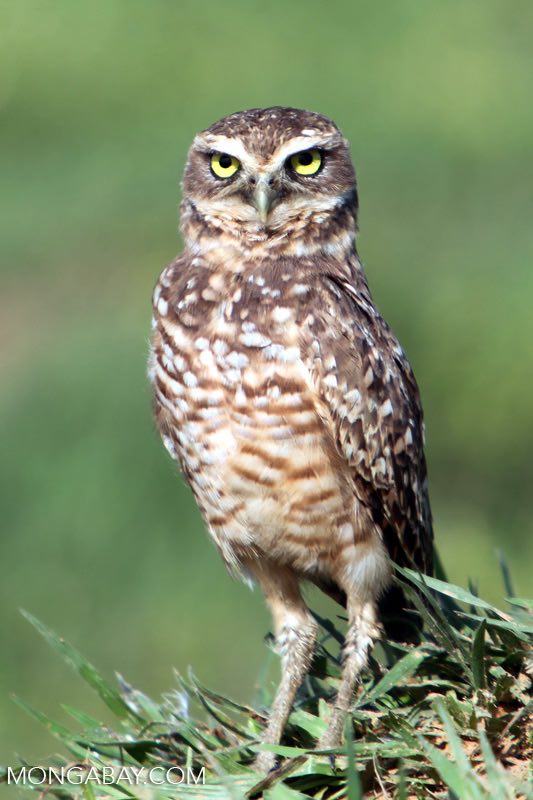
They are called burrowing owls because they live in burrows in the ground. They do not do the burrowing themselves, however – they live in holes dug by animals like ground squirrels, badgers, prairie dogs, or desert tortoises.
Burrowing owls live in much of western North America, from the prairies of Canada down through Mexico. There are also populations of burrowing owls in Florida and South America. These owls live in grassland and desert ecosystems where there are open areas where the owls can hunt rodents, grasshoppers, and other insects.
Burrowing owls are quite small. They do not hunt larger prey such as rabbits, skunks, and songbirds that other large owls species like great horned owls do. Burrowing owls may be seen hunting during the day when insects are active, although they also hunt at night like other owl species.
The burrows that the owls live in have several functions:
Burrowing owls live in areas that are hot and dry. During the heat of the day they stay in their burrows where the temperatures are cooler than out in the open air.
Burrowing owls lay their eggs and raise their young in their burrows. The nesting season for burrowing owls in North America is from April to July, although eggs may be laid before or after this period in some areas. The female burrowing owl lays between 3 and 12 eggs. She sits on the eggs for approximately a month, while the male owl hunts and brings her food in their burrow.
The baby owls stay with their parents for about 6 weeks and then leave the burrow to live on their own. This process is called fledging. In the period before they fledge the young burrowing owls learn to fly, how to hunt insects and rodents, and how to avoid predators that might want to eat them, like hawks and other larger species of owls.
Are burrowing owls doing well in the wild?
Burrowing owl populations seem to be doing well in South America. In North America, however, burrowing owls populations are declining in many parts of their range. The open areas where burrowing owls like to live are the same areas where people like to build houses, shopping malls, golf courses, and farms.
In California people are trying to protect burrowing owls by setting aside areas that are large enough for them to raise their young and hunt for their insect and rodent prey. There are also efforts to restore some areas that where burrowing owls once lived so that they may return. Sometimes people build artificial burrows for the burrowing owls to live in. Hopefully we can find ways to provide enough space for both people and burrowing owls.
By David Brown

